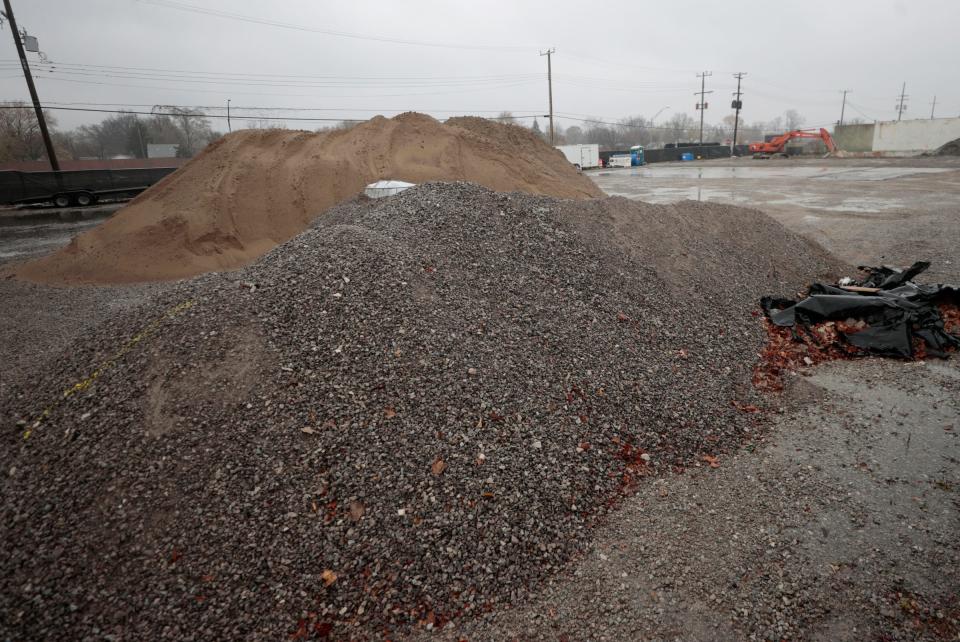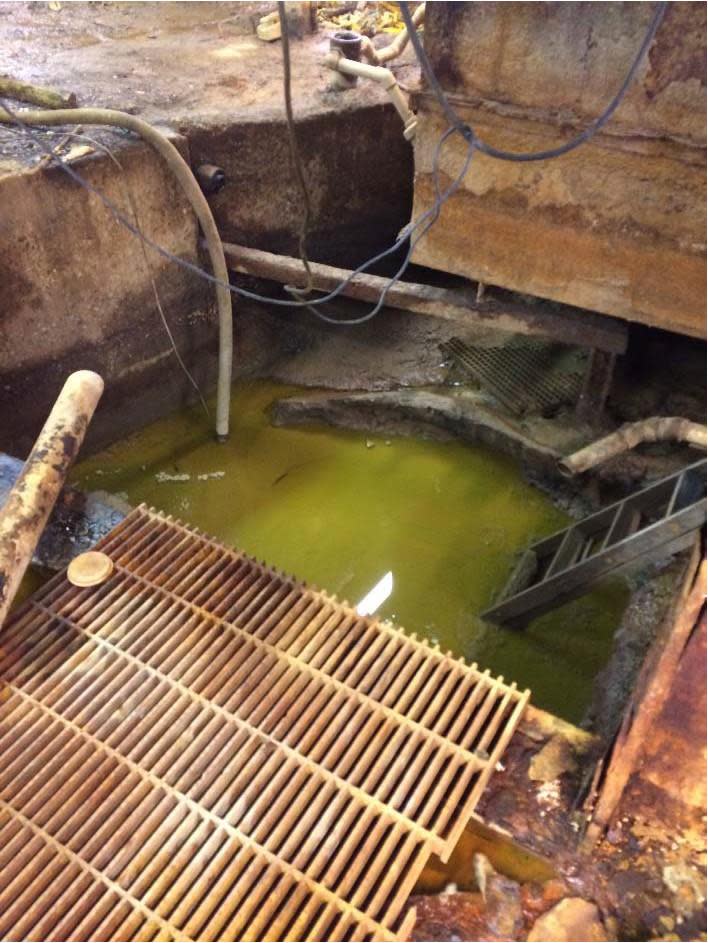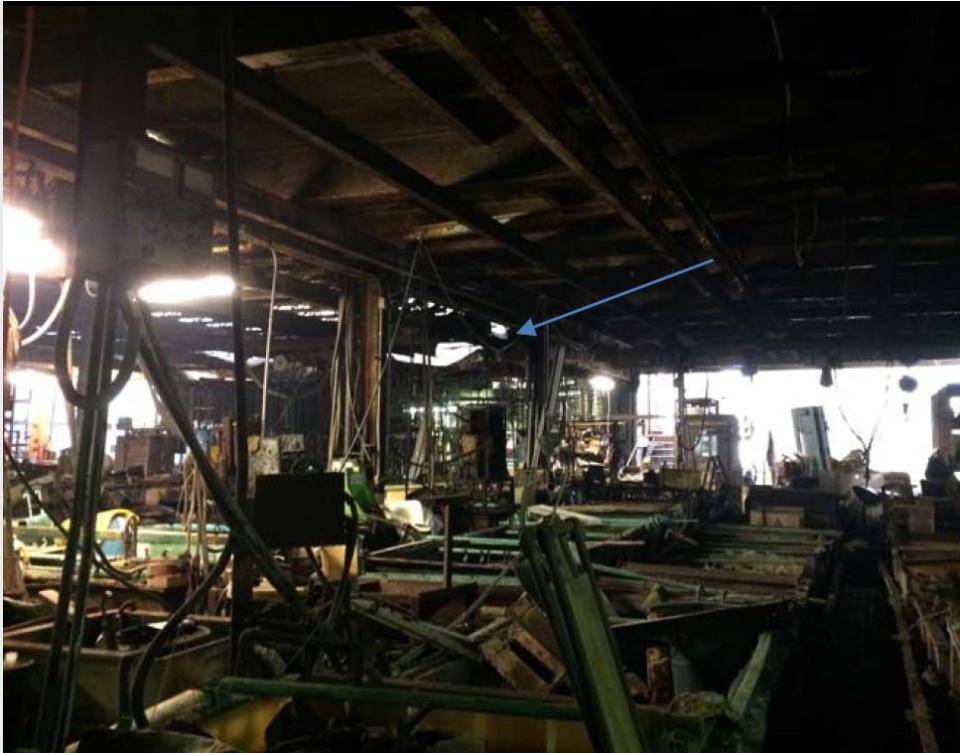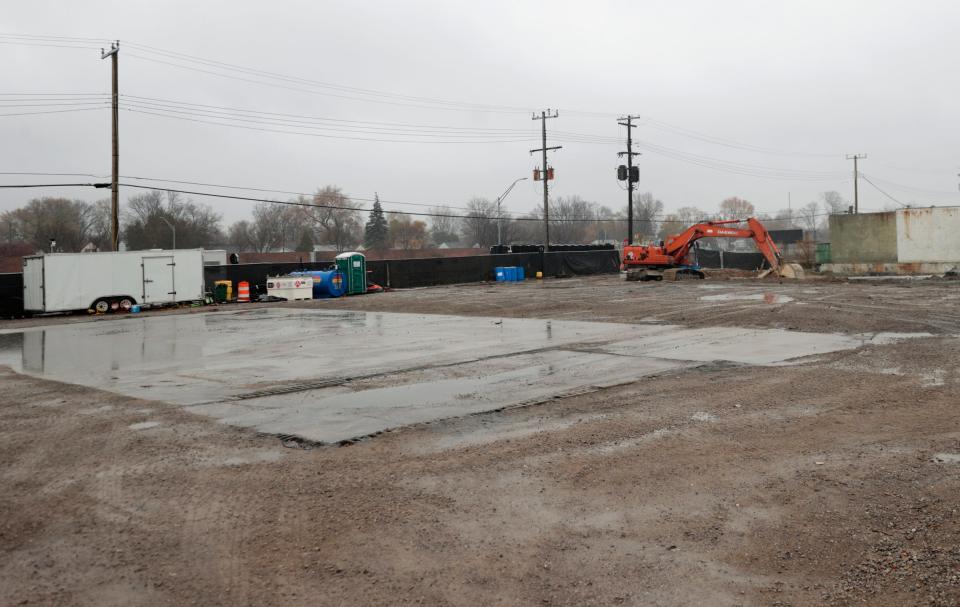4 years later, cleanup of green ooze pollution on I-696 still not complete
Four years after an almost fluorescent green ooze coming out of an embankment startled motorists on Interstate 696 in Madison Heights, just before Christmas in 2019, a more than $4 million cleanup is nearing the finish line.
The ooze included potentially health-harming chemicals including hexavalent chromium, trichloroethylene and nonstick "forever chemicals" known as PFAS, emanating from the defunct Electro-Plating Services property above the freeway on East 10 Mile Road.
The Michigan Department of Environment, Great Lakes and Energy is treating and removing contaminated soil from beneath the now-razed building, and expects to complete that work "in the first quarter of 2024," said Joseph DeGrazia, an incident management specialist in EGLE's Remediation and Redevelopment Division.
"Long-term monitoring will continue after these remediation actions are completed," he said.
An environmental house of horrors
Electro-Plating Services, owned by Gary Sayers, had a history of run-ins with local officials and environmental regulators. But it was in 2016, during a fire marshal inspection, that an environmental house of horrors was discovered.
Inside were more than 5,000 containers of toxic waste stored so haphazardly, in a building in such disrepair, that authorities feared an imminent explosion or poisonous gas release into the nearby residential neighborhood, federal court records and state agency documents show.

Amid the squalor were leaking barrels of sodium cyanide, stored next to uncovered, corroding plating baths full of acids, all "exposed to precipitation from the holes in the roof and windows," Assistant U.S. Attorney Sara Woodward wrote in an October 2019 sentencing memorandum for Sayers in U.S. District Court in Detroit.
According to the U.S. Centers for Disease Control and Prevention, sodium cyanide reacts violently with strong oxidants such as acids, "causing an explosion hazard." It also "releases highly flammable and toxic hydrogen cyanide gas on contact with acids or water."
That gas "can be rapidly fatal," according to the CDC. Hydrogen cyanide gas was used to execute prisoners in gas chambers for years in the U.S., before its use was discontinued in the 1990s amid rising criticism of the slow, painful deaths it caused.

Sayers was sentenced to one year in federal prison for felony charges of improper hazardous waste storage in November 2019. He was also ordered to reimburse the U.S. Environmental Protection Agency $1.45 million for costs related to the cleanup of the 10 Mile Road business, which included remediation of hexavalent chromium and other toxic chemicals dumped into a deep pit Sayers dug beneath his property.
Sayers, then 70, was released from federal prison early in May 2020 amid the COVID-19 pandemic. Attempts to reach him for comment were unsuccessful.
EPA finished cleanup, but contamination remained
The EPA Superfund team conducted a year-long remediation at Electro-Plating Services to remove the haphazardly stored toxic chemicals and clean up the dangerous mess. When it handed over authority at the site to EGLE, it informed the state agency that there was still remaining contamination in the soils near, and likely under, the building.
Further cleanup at the site by state regulators wasn't prioritized, however, because the remaining contamination wasn't believed to be migrating offsite, and no public water supplies were affected, EGLE officials said. But then came the green ooze on I-696, widely noticed on Dec. 19, 2019.
That prompted a new round of EPA responses, including creating an interceptor trench along the embankment to capture contaminated groundwater, then pumping it and shipping it away for proper disposal. The EPA removed more than 350,000 gallons of contaminated groundwater. The EPA's bill for the latest round of activity was $3.1 million.
But that groundwater-pumping would have had to occur in perpetuity, according to EGLE officials, unless the underlying soil contamination was treated and removed. And that meant demolishing the Electro-Plating Services building to get to it. The city took Sayers and his companies to court in 2020, seeking to abate the public nuisance. The court ultimately condemned Sayers' properties, and the city became their legal owner this past summer and demolished all of the buildings on the land, with the help of appropriated state and Oakland County funding.
Mayor: Sayer showed disregard for the law, residents
Madison Heights Mayor Roslyn Grafstein had strong words for Sayers. None of the financial judgments against him have resulted in any money being recovered by the governments incurring costs for the cleanup. Grafstein said Sayers "continued to fight us every step of the way."

"When cited as Mr. Sayers was years ago, most owners would have adopted best business practices and ensured proper, safe disposal of chemicals going forward, to be a good steward in the community," she said. "Mr. Sayers chose a different path, which led to years of ongoing litigation, a prison sentence and courts finally condemning the property.
"He showed total disregard for the law, his employees and the residents who live in Madison Heights, Hazel Park and surrounding communities."
Grafstein said the city estimates its costs will exceed $1 million overall, as the final cleanup of Electro-Plating Services takes place. She added that the city will look to collect the expenses from Sayers once they are finalized.
EGLE treating the contaminated soils in place
With the buildings removed, EGLE is now treating contaminated soils under the building footprint with a reagent that causes an oxidation-reduction reaction that changes hexavalent chromimum into trivalent chromium — which according to the EPA is much less toxic.
"The soils will then be excavated and sent to a hazardous waste landfill," DeGrazia said.
Long-term, EGLE will continue to monitor the site and will maintain the permeable reactive barriers that EPA installed during its mitigation work. The synthetic barriers contain various treatment agents that break down contaminants the barrier is designed to capture while allowing groundwater to flow through.
Hexavalent chromium levels from monitoring wells at the site in July 2020 showed at 31,000 micrograms per liter. EGLE's protective standard limit for the chemicals in places where groundwater and surface water interact is 11 micrograms per liter. But after installation of the permeable reactive barriers, the levels quickly dropped below the 11 micrograms per liter standard and stayed there.

Once remediation is complete and the city gets permission from EGLE, city officials plan to sell the 10 Mile Road property for redevelopment, Grafstein said. "We expect this to be in the beginning of 2024," she said.
Contact Keith Matheny: kmatheny@freepress.com.
This article originally appeared on Detroit Free Press: 4 years later, I-696 green ooze pollution cleanup nears completion

